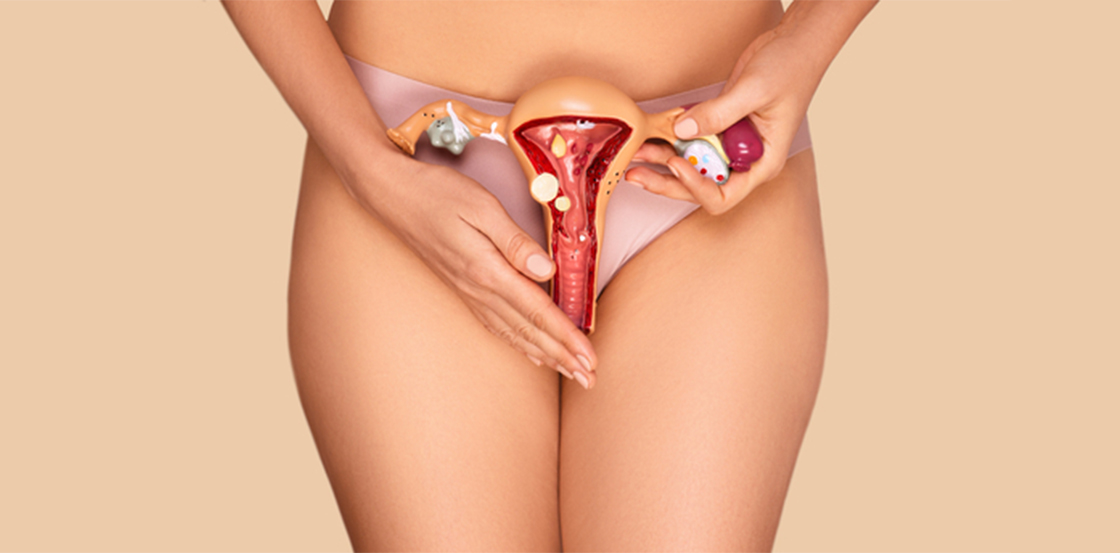Post link copied to clipboard!

A Bartholin cyst is a type of vaginal cyst that forms on the labia (vaginal lips) near the opening of the vagina.
The Bartholin’s glands are important organs of the female reproductive system. Danish anatomist Caspar Bartholin Secundus first described them in 1677. Their primary function is the production of a mucoid secretion that aids in vaginal and vulvar lubrication.
Bartholin glands are small glands that produce fluid to lubricate the vagina. The cyst occurs when one of these gland ducts becomes blocked, causing mucus to build up and form a lump. It usually occurs on only one side of the labia. Some Bartholin cysts are small and painless, while others may become infected and cause pain.
A Bartholin cyst appears as a round bump under the skin on the labia. It is often painless but can become red, tender, and swollen if infected. Some cysts may look filled with pus or fluid. They can vary in size, ranging from as small as a pea to as large as a golf ball. The cyst may make one side of the labia appear larger or uneven.
Bartholin cysts can occur in about 2% of women at some point in their life. They are more common in women of reproductive age and become less likely after menopause.
The exact cause of Bartholin cysts is unknown. Some possible causes include:
Many Bartholin cysts are small and do not cause symptoms other than minor irritation. However, if the cyst becomes infected, symptoms may include:
Most Bartholin cysts do not become infected and cannot spread through skin-to-skin contact. However, if the cyst is caused by a sexually transmitted infection (STI), the infection itself can be contagious.
Bartholin cysts can be caused by bacterial infections such as E. coli or STIs like gonorrhoea and chlamydia. These bacteria can block the Bartholin gland and lead to the formation of a cyst.
The majority of Bartholin cysts do not get infected and are not transmissible through skin-to-skin contact. However, it is important to note that sexually transmitted infections (STIs) can potentially lead to Bartholin cysts, and these infections are indeed contagious.
A healthcare provider can diagnose a Bartholin cyst through a physical examination. They will assess the size of the cyst and look for signs of infection. If the cyst produces discharge, fluid may be tested for STIs or other bacterial infections. In some cases, a biopsy may be performed to rule out cancer in older women.
The treatment for Bartholin cysts depends on the symptoms. If the cyst is small, painless, and not infected, it may not require treatment.
However, if symptoms persist or the cyst grows, it may indicate an abscess (infection) that needs to be addressed.
It is never recommended to squeeze, pop, or insert sharp objects into a Bartholin cyst to force it to open. This can cause injury and spread infection. It is normal for a Bartholin cyst to drain on its own after several days of treatment, such as sitz baths or antibiotics.
When a Bartholin cyst opens, it may release various substances such as pus, mucus, bacteria, blood, or other fluids. The discharge can be thick and range in colour from light yellow to brown or red. Infected Bartholin cysts may have an unpleasant odour when they rupture. It is important to keep the affected area clean and practice good hygiene.
Bartholin cysts cannot be prevented in most cases since the exact cause is unknown. However, reducing the risk of complications from infections can be achieved by maintaining good hygiene practices and using condoms during sex to lower the risk of STIs.
It is important to consult with a healthcare provider for proper guidance on treatment. Attempting to drain or squeeze a cyst at home can lead to infection and worsen symptoms. Feel free to reach out to us if you have any inquiries or worries regarding Bartholin cyst or its treatment. Our team of TopGynaecologists are dedicated to offering you excellent care and support. You’re not alone in this process, and we genuinely appreciate hearing from you.
To manage the symptoms of a Bartholin cyst, you can try at-home remedies such as soaking in a warm bath several times a day (sitz baths) and taking over-the-counter pain relievers. These measures can help alleviate discomfort. Many Bartholin cysts resolve on their own without medical treatment. However, if the cyst becomes painful or infected, it is advisable to contact a healthcare provider.
Most Bartholin cysts commonly resolve on their own. Sitz baths are often recommended by healthcare providers to manage symptoms. If a cyst drains or bursts on its own, it is generally considered normal. Keeping the area clean and dry can help prevent the spread of infection. It is important not to squeeze or drain a Bartholin cyst yourself, as this can cause infection. If the cyst becomes painful, infected, or persists for several weeks without improvement, it is recommended to contact a healthcare provider.
The duration of a Bartholin cyst varies depending on its size and whether it becomes infected. Typically, cysts completely resolve within a few weeks. After examining the cyst, a healthcare provider can provide an estimate of how long symptoms may last.
Some women may experience recurring Bartholin cysts, although healthcare providers are unsure why this happens. While Bartholin gland cysts are usually treatable, recurring cysts may require more intensive treatment.
It is important to contact a healthcare provider if you have a painful lump.